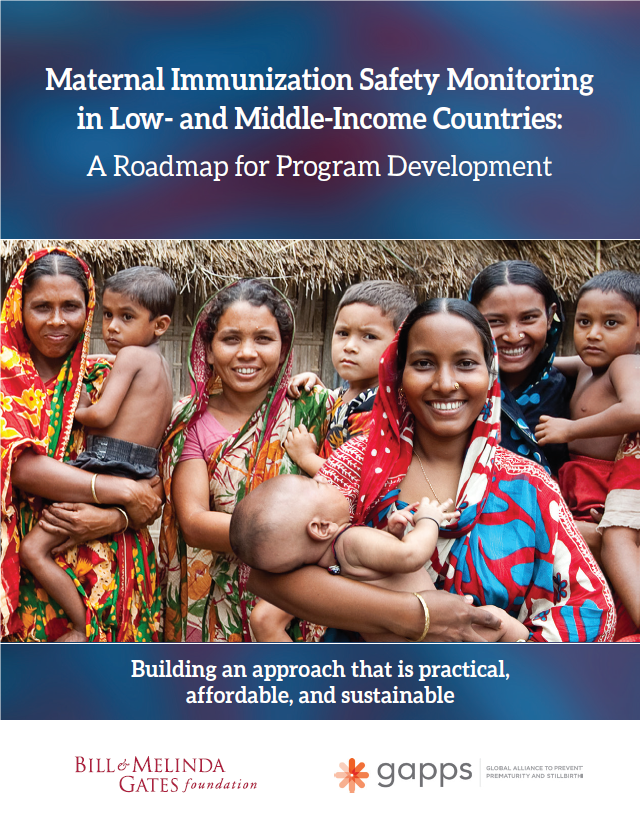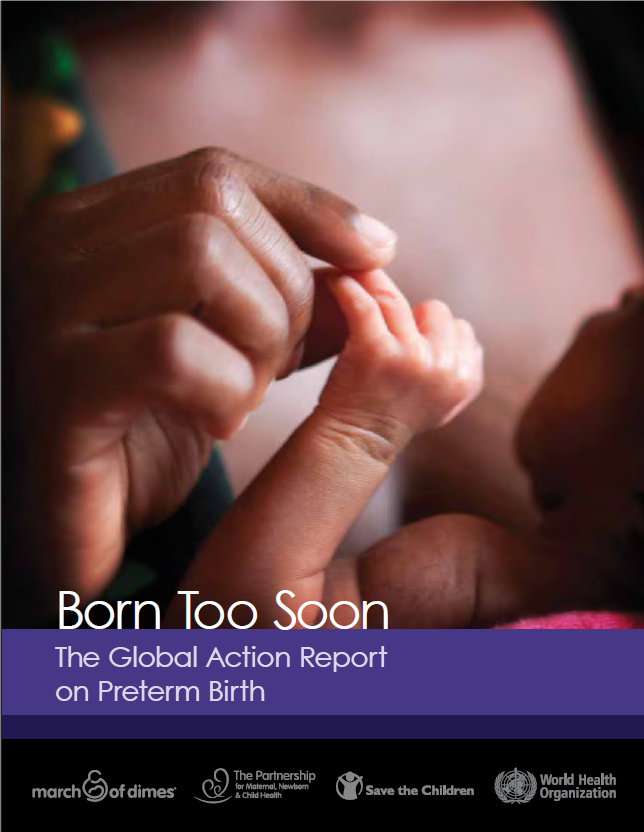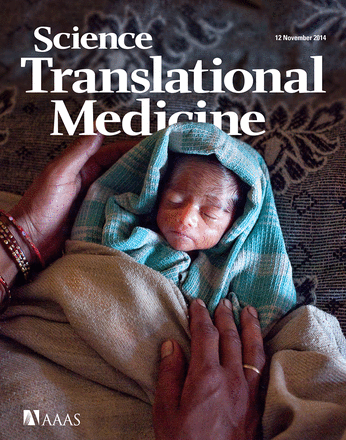Selected Publications and Reports
The GAPPS team and our collaborators have contributed to several important publications and reports about preterm birth and stillbirth. Expand the sections below to learn more about our reports and publications and access these resources.

Maternal immunization holds the promise of reducing the global burden of morbidity and mortality in pregnant women and newborns, particularly in low- and middle-income countries (LMICs) where there is the greatest burden of vaccine-preventable disease and the most limited access to essential health services. Global efforts are underway to develop, evaluate, and implement new vaccines targeted specifically for use in pregnant women in LMICs. As these efforts go forward, it is a critical time to formulate an organized and comprehensive approach to monitoring safety of maternal immunizations in LMICs and tracking safety and effectiveness to ensure program success and public confidence. In response to this need, GAPPS, with support from the Bill and Melinda Gates Foundation and input from a large, multidisciplinary group of advisors, coauthors, technical experts, and stakeholders, developed a report summarizing existing programs and developed a roadmap to strengthen maternal immunization safety monitoring in LMICs. Learn more about this project, and access the full report here.
GAPPS served on the Advisory Council for this series addressing the epidemic of stillbirths, which has been recognized as an essential part of the post-2015 sustainable development agenda.
This comment published in Lancet Global Health issues a call-to-action to advance a comprehensive research agenda to address the global burden of preterm birth.

GAPPS former Executive Director Dr. Craig Rubens and former Deputy Director Dr. Eve Lackritz contributed to this report highlighting the first-ever national, regional, and global estimates of preterm birth.
Download the report here (pdf, 5.9 MB).

This state-of-the-art review evaluating the state of reproductive science relevant to understanding the causes of preterm birth, identifying potential targets for prevention, and outlining challenges and opportunities for translating research findings into effective interventions was authored by four GAPPS team members. The review was published in the November 2014 issue of Science Translational Medicine.
In the February 2012 issue of AJOG, GAPPS Scientific Director Dr. Michael Gravett contributed to a series of articles on classifying and defining the preterm birth syndrome:
The preterm birth syndrome: a prototype phenotypic classification
Challenges in defining and classifying the preterm birth syndrome
The preterm birth syndrome: issues to consider in creating a classification system
Authored by an international team, The Lancet series was orchestrated under the leadership of a GAPPS collaborative investigator, Dr. Joy Lawn, Saving Newborn Lives/Save the Children, Cape Town, South Africa; and Dr. Vicki Flenady, Mater Medical Research Institute and University of Queensland, Australia. The Series reviews the rates and causes of stillbirth globally, explores cost-effective interventions to prevent stillbirths (as well as maternal and neonatal deaths), and sets key actions to reduce stillbirth rates by 50% by 2020.
To read the articles, follow the links below
- The Lancet Series Paper 1: Stillbirths: Why They Matter
- The Lancet Series Paper 2: Stillbirths: Where, When, Why?
- The Lancet Series Paper 3, Stillbirths: What Can We Do at What Cost?
- The Lancet Series Paper 4, Stillbirths: How Can Health Systems Deliver?
- The Lancet Series Paper 5, Stillbirths: High-Income Countries
- The Lancet Series Paper 6, Stillbirths: The Vision for 2020
For a list of publications published by our collaborators click on their name below.
In June 2016, Every Preemie - SCALE finalized and launched Antenatal Corticosteroids for Women at Risk of Imminent Preterm Birth in the Democratic Republic of Congo, Ethiopia, Malawi, Nigeria, Sierra Leone, Tanzania and Uganda: A Policy and Implementation Landscape Analysis. The landscape analysis was conducted on behalf of the Newborn Health Technical Resource Team under the UN Commission for Life-Saving Commodities for Women and Children (UNCoLSC). The analysis identifies crucial needs within health care systems for safe and effective use of ACS that must be addressed by the international community as well as by national stakeholders. The information provided in this landscape analysis can be used to advance the global and national conversation regarding the safe expansion of ACS and, ultimately, inform comprehensive programming to improve the survival of babies born too soon.
